Recent Articles
-
Mighty King Cobra
Posted in Wildlife A-Z | April 7, 2010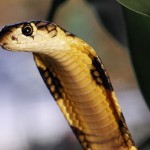 It can be a bit unnerving to know that the most venomous snake on the planet can stand erect and look at a full-grown adult straight in the eye. What are we talking about? Nothing but the legendary king cobra. A king cobra can touch 18 feet in length. This makes them the longest venomous snake in the world. When under threat, they raise nearly one-third of their bodies off the ground. This helps them move forward to attack. When they perceive danger, they develop their characteristic hoods and emit a spine-chilling hiss. This resembles the growl of a dog. The venom of the king cobra is not the most potent. However, the amount of neurotoxin that they generate in a single bite is sufficient to kill 20 people or a large elephant. Each bite can [...]
It can be a bit unnerving to know that the most venomous snake on the planet can stand erect and look at a full-grown adult straight in the eye. What are we talking about? Nothing but the legendary king cobra. A king cobra can touch 18 feet in length. This makes them the longest venomous snake in the world. When under threat, they raise nearly one-third of their bodies off the ground. This helps them move forward to attack. When they perceive danger, they develop their characteristic hoods and emit a spine-chilling hiss. This resembles the growl of a dog. The venom of the king cobra is not the most potent. However, the amount of neurotoxin that they generate in a single bite is sufficient to kill 20 people or a large elephant. Each bite can [...] -
Majestic Giraffe
Posted in Wildlife A-Z | April 6, 2010 Giraffe is the world’s tallest mammal. They owe this to their towering legs and long necks. The legs of the giraffe are taller than most humans, standing at 6 feet. These legs allow the giraffe to run up to 35 mph over short distances. Over longer distances, they cruise at 10 mph. These grandiose animals roam the open grasslands in groups of six to ten. Male bulls often engage in battle using their long necks and heads as battling gear. These skirmishes do not pose any dangers. They end with one animal walking away. Giraffes use their height to good benefits. They gorge on leaves and buds that lie high on the treetops. Few animals can reach these trees. The acacia plant is a particular favorite among the giraffe population. The tongue of the [...]
Giraffe is the world’s tallest mammal. They owe this to their towering legs and long necks. The legs of the giraffe are taller than most humans, standing at 6 feet. These legs allow the giraffe to run up to 35 mph over short distances. Over longer distances, they cruise at 10 mph. These grandiose animals roam the open grasslands in groups of six to ten. Male bulls often engage in battle using their long necks and heads as battling gear. These skirmishes do not pose any dangers. They end with one animal walking away. Giraffes use their height to good benefits. They gorge on leaves and buds that lie high on the treetops. Few animals can reach these trees. The acacia plant is a particular favorite among the giraffe population. The tongue of the [...] -
Magic of the Oyster
Posted in Wildlife A-Z | April 6, 2010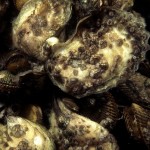 There are some food items in the world that question the validity of using these items as food. The oyster is one such food. The appearance of the oyster is generally unpalatable. Most individuals who gorge on oysters are undaunted by the rough and rocky surface of the oyster. The oyster shell, too, is nearly impossible to open. The body of the oyster is gray and slimy. Its plump body is phlegmatic in nature. The texture of the oyster is delicate and toothy. The flavor is rich with a hint of salt. They are also rich in calcium, iron, and protein. It has to be said that oysters are not for everyone. Adventure seekers the world over have experimented with oysters. They have been eaten raw as well as cooked for thousands of years. Food oysters [...]
There are some food items in the world that question the validity of using these items as food. The oyster is one such food. The appearance of the oyster is generally unpalatable. Most individuals who gorge on oysters are undaunted by the rough and rocky surface of the oyster. The oyster shell, too, is nearly impossible to open. The body of the oyster is gray and slimy. Its plump body is phlegmatic in nature. The texture of the oyster is delicate and toothy. The flavor is rich with a hint of salt. They are also rich in calcium, iron, and protein. It has to be said that oysters are not for everyone. Adventure seekers the world over have experimented with oysters. They have been eaten raw as well as cooked for thousands of years. Food oysters [...] -
Grand Teton National Park
Posted in North America | April 5, 2010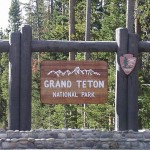 Grand Teton National Park is located in the Rocky Mountains in northwestern Wyoming in the USA. The park is noted for its mountain vistas, alpine lakes and wildlife. The park gets its name after Grand Teton, the tallest peak in the Teton Range at 4,197 metres. The name ‘Tetons’ was originally used to describe hills near the town of Arco in Idaho. Grand Teton National Park was established in February 1929. The park is spread over an area of 1,250 square kilometres. Geography The north-south-trending Teton Range, which is a part of the Rocky Mountains, rises from the floor of Jackson Hole (a graben with an average elevation of 2,100 metres) along a 64 km by 11-14 km wide active fault-block mountain. Jackson Lake is the largest lake here [...]
Grand Teton National Park is located in the Rocky Mountains in northwestern Wyoming in the USA. The park is noted for its mountain vistas, alpine lakes and wildlife. The park gets its name after Grand Teton, the tallest peak in the Teton Range at 4,197 metres. The name ‘Tetons’ was originally used to describe hills near the town of Arco in Idaho. Grand Teton National Park was established in February 1929. The park is spread over an area of 1,250 square kilometres. Geography The north-south-trending Teton Range, which is a part of the Rocky Mountains, rises from the floor of Jackson Hole (a graben with an average elevation of 2,100 metres) along a 64 km by 11-14 km wide active fault-block mountain. Jackson Lake is the largest lake here [...] -
Crater Lake National Park
Posted in North America | April 5, 2010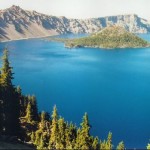 Crater Lake National Park is located in southern Oregon in the United States. John Hillman was the first white to have discovered the lake, way back in 1853. Set up in 1902 (thanks to the efforts of naturalist William Gladstone Steel), Crater National Park is the sixth oldest national park in the country. Medford is the nearest city to Crater Lake National Park. The park is spread over an area of 18,224 acres and is governed by National Park Service. The highest point in Crater Lake National Park is Mt. Scott at 2,722 metres. About Crater Lake: Crater Lake located at the centre of the national park is the deepest lake (594 metres at its deepest point) in the United States. The caldera is located in the remains of a destroyed volcano (Mount [...]
Crater Lake National Park is located in southern Oregon in the United States. John Hillman was the first white to have discovered the lake, way back in 1853. Set up in 1902 (thanks to the efforts of naturalist William Gladstone Steel), Crater National Park is the sixth oldest national park in the country. Medford is the nearest city to Crater Lake National Park. The park is spread over an area of 18,224 acres and is governed by National Park Service. The highest point in Crater Lake National Park is Mt. Scott at 2,722 metres. About Crater Lake: Crater Lake located at the centre of the national park is the deepest lake (594 metres at its deepest point) in the United States. The caldera is located in the remains of a destroyed volcano (Mount [...] -
Hum of the Ruby-throated Hummingbird
Posted in Wildlife A-Z | April 2, 2010 The striking red throat is characteristic of the male ruby-throated hummingbird. The female hummingbird lacks this coloration. The acrobatic style of flying has not been matched by other birds. They beat their wings nearly 53 times a second. If you wish to witness their ruby throats, you would need to exchange a quick glance. The ruby-throated hummingbird tends to hover frequently. They also fly upside down and backwards. Due to the presence of short legs, ruby-throated hummingbirds find it difficult to walk or hop. These hummingbirds primarily inhabit woodland regions. Gardens rich in flower density are also a famous zone for the ruby-throated hummingbird. They hover in the air to feed on flowers, nectar, and sap. In the process, they pollinate [...]
The striking red throat is characteristic of the male ruby-throated hummingbird. The female hummingbird lacks this coloration. The acrobatic style of flying has not been matched by other birds. They beat their wings nearly 53 times a second. If you wish to witness their ruby throats, you would need to exchange a quick glance. The ruby-throated hummingbird tends to hover frequently. They also fly upside down and backwards. Due to the presence of short legs, ruby-throated hummingbirds find it difficult to walk or hop. These hummingbirds primarily inhabit woodland regions. Gardens rich in flower density are also a famous zone for the ruby-throated hummingbird. They hover in the air to feed on flowers, nectar, and sap. In the process, they pollinate [...] -
Everglades National Park
Posted in North America | April 2, 2010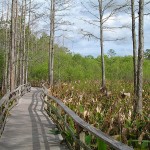 Everglades National Park is a UNESCO World Heritage Site located in southern Florida (Dade, Broward, Monroe, and Collier counties) in the USA. The park, which is one of the largest national parks (area: 6,110 square kilometres) in the US, protects Everglades, the largest subtropical wetlands in the country. Everglades National Park is among the only three locations in the world that has also been declared an International Biosphere Reserve and a Wetland of International Importance besides a World Heritage Site. The park was set up in 1947. Nearest city is Florida City. Geography: The elevation of the park ranges from 0 to 2.4 metres above sea level. However, a shell mound built by Native Americans on the Gulf Coast is 6.1 metres. Lake Okeechobee [...]
Everglades National Park is a UNESCO World Heritage Site located in southern Florida (Dade, Broward, Monroe, and Collier counties) in the USA. The park, which is one of the largest national parks (area: 6,110 square kilometres) in the US, protects Everglades, the largest subtropical wetlands in the country. Everglades National Park is among the only three locations in the world that has also been declared an International Biosphere Reserve and a Wetland of International Importance besides a World Heritage Site. The park was set up in 1947. Nearest city is Florida City. Geography: The elevation of the park ranges from 0 to 2.4 metres above sea level. However, a shell mound built by Native Americans on the Gulf Coast is 6.1 metres. Lake Okeechobee [...] -
Cute Chipmunks
Posted in Wildlife A-Z | April 1, 2010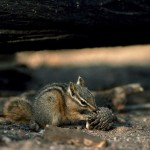 Chipmunks are members of the squirrel family. They are lively and speedy critters. They have pudgy cheeks and large, glossy eyes. In addition to this, they have wonderful stripes and bushy tails. These characteristics have attracted animators from Hollywood. Chipmunks have played quite a few substantial roles in Hollywood movies. There are nearly 25 species of chipmunks. Of these, all except one have been found in North America. Asia’s Tamias sibiricus is the only exception. Chipmunks have been found from Canada to Mexico. They generally scamper through the undergrowth of a number of environments from alpine forests to shrubby deserts. Many chipmunks dig burrows for their homes. Some of these burrows are complete with tunnels and chambers. [...]
Chipmunks are members of the squirrel family. They are lively and speedy critters. They have pudgy cheeks and large, glossy eyes. In addition to this, they have wonderful stripes and bushy tails. These characteristics have attracted animators from Hollywood. Chipmunks have played quite a few substantial roles in Hollywood movies. There are nearly 25 species of chipmunks. Of these, all except one have been found in North America. Asia’s Tamias sibiricus is the only exception. Chipmunks have been found from Canada to Mexico. They generally scamper through the undergrowth of a number of environments from alpine forests to shrubby deserts. Many chipmunks dig burrows for their homes. Some of these burrows are complete with tunnels and chambers. [...] -
Fabulous Flight of the Flying Snakes
Posted in Wildlife A-Z | April 1, 2010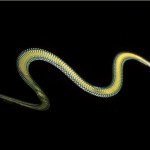 It may be frightening to picture a group of flying snakes. This could be the stuff that nightmares are made of. However, flying snakes are a reality in South and Southeast Asia. The term ‘flying snake’ may sound strange as these creatures do not reach high altitudes. They have strong updraft. They are generally gliders and use the speed of free falls with body contortions to remain in air and generate appropriate lift. The flying snake is thought to be more of a parachuter than a glider. Recent research has thrown up interesting facts on how these limbless creatures plummet in the air. By preparing for a take-off, a flying snake will move to the end of a branch and dangle in a ‘J’ shape. It then uses the lower half of the body to propel [...]
It may be frightening to picture a group of flying snakes. This could be the stuff that nightmares are made of. However, flying snakes are a reality in South and Southeast Asia. The term ‘flying snake’ may sound strange as these creatures do not reach high altitudes. They have strong updraft. They are generally gliders and use the speed of free falls with body contortions to remain in air and generate appropriate lift. The flying snake is thought to be more of a parachuter than a glider. Recent research has thrown up interesting facts on how these limbless creatures plummet in the air. By preparing for a take-off, a flying snake will move to the end of a branch and dangle in a ‘J’ shape. It then uses the lower half of the body to propel [...] -
Beauty of the Greater Flamingo
Posted in Wildlife A-Z | March 31, 2010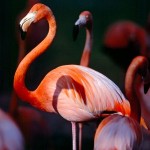 Greater flamingoes are pink beauties found in warm coastal regions of most continents. They prefer environments such as estuaries and alkaline or saline lakes. Greater flamingoes are surprisingly fluid swimmers when you take into account their appearance. They thrive in mud flats where they eat and breed. It is possible that the greater flamingo is the only tall, pink bird in a given location. Their necks are long and curved. Their bills have a characteristic black tip with a sharp bend. The shape of the bill helps them to feed on small organisms, including plankton, fish, and larvae of flies. Greater flamingoes utilize their long legs and webbed feet to move in the muddy flats and shallow water. Often, they bury their bills to take in mud and [...]
Greater flamingoes are pink beauties found in warm coastal regions of most continents. They prefer environments such as estuaries and alkaline or saline lakes. Greater flamingoes are surprisingly fluid swimmers when you take into account their appearance. They thrive in mud flats where they eat and breed. It is possible that the greater flamingo is the only tall, pink bird in a given location. Their necks are long and curved. Their bills have a characteristic black tip with a sharp bend. The shape of the bill helps them to feed on small organisms, including plankton, fish, and larvae of flies. Greater flamingoes utilize their long legs and webbed feet to move in the muddy flats and shallow water. Often, they bury their bills to take in mud and [...]


